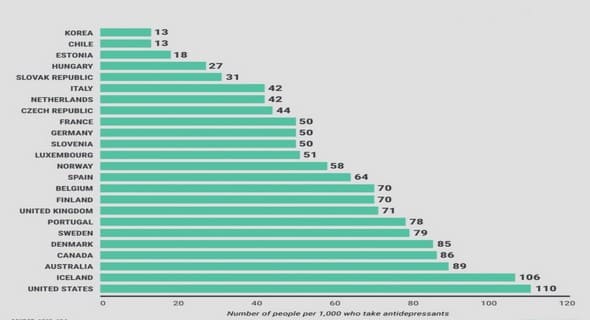(Downloads - 0)
For more info about our services contact : help@bestpfe.com
Table of contents
1 Introduction (version francaise)
1.1 Representation geometrique des modeles deformables
1.1.1 Modeles explicites
1.1.2 Modeles implicites
1.2 Minimisation de la fonctionnelle d’energie
1.3 Tendances majeures dans l’elaboration de la fonctionnelle d’energie
1.3.1 Segmentation d’images
1.3.2 Stereovision multi-cameras
1.4 Contributions de cette these
1.4.1 Contributions methodologiques
1.4.2 Contributions appliquees
1.4.3 Contributions logicielles
2 Introduction
2.1 Geometric representation of deformable models
2.1.1 Explicit models
2.1.2 Implicit models
2.2 Minimization of the energy functional
2.3 Major trends in the design of the energy functional
2.3.1 Image segmentation
2.3.2 Multi-view stereovision
2.4 Contributions of this thesis
2.4.1 Methodological contributions
2.4.2 Applied contributions
2.4.3 Software contributions
3 Maintaining the Point Correspondence in the Level Set Framework
3.1 Motivation
3.2 Methods
3.2.1 Previous work on region tracking
3.2.2 Previous work on transport and diusion of a material quantity
3.2.3 LSID: Level sets with some interfacial data
3.2.4 LSPC: Level sets with a point correspondence
3.3 Numerical algorithms
3.3.1 Level set reinitialization and data extension
3.3.2 Keeping the point correspondence onto the initial interface
3.3.3 Finite-dierence schemes
3.3.4 Overview of the algorithm
3.4 Experimental results
3.4.1 Denition of the error measures
3.4.2 2D experiments
3.4.3 3D experiments
3.4.4 Comments on the errors
3.5 Contributions of this chapter
4 Controlling Topology Changes in the Level Set Framework
4.1 Background
4.1.1 Topology
4.1.2 Digital topology
4.1.3 The topology preserving level set method
4.2 The topology preserving nested level set method
4.2.1 Digital topology criterion
4.2.2 Description of the algorithm
4.3 The genus preserving level set method
4.3.1 From simple points to multisimple points
4.3.2 Description of the algorithm
4.4 Experimental results
4.4.1 Synthetic data
4.4.2 Real data
4.5 Contributions of this chapter
5 Improving the Robustness to Local Minima with Spatially Coherent Minimizing Flows
5.1 Motivation
5.2 Abstract study
5.2.1 Designing new inner products
5.2.2 Designing new minimizing
5.3 Spatially coherent minimizing
5.3.1 The H1 gradient
5.3.2 Motion decomposition
5.3.3 Intrinsic Gaussian smoothing
5.4 Experimental results
5.4.1 Shape warping
5.4.2 Tracking
5.5 Contributions of this chapter
II Applications
6 Area Preserving Cortex Unfolding
6.1 Motivation
6.2 Area preserving surface motion
6.2.1 The total, local and relative area preserving conditions
6.2.2 Designing a relative area preserving tangential motion
6.2.3 The area relaxation term
6.2.4 Numerical methods
6.3 Experimental results
6.3.1 Synthetic data
6.3.2 Real data
6.4 Contributions of this chapter
7 Head Segmentation from MRI under Topological Constraints
7.1 Motivation
7.1.1 Problem statement
7.1.2 Previous work
7.1.3 Goals of our approach
7.2 Methods
7.2.1 Hidden Markov random eld classication
7.2.2 Topology preserving nested level sets
7.2.3 Bayesian region-based deformable models evolution
7.3 Experimental results
7.4 Contributions of this chapter
8 Multi-View Stereo Reconstruction and Scene Flow Estimation with a Global Image-Based Matching Score
8.1 Introduction
8.1.1 Problem statement
8.1.2 Common photometric and geometric assumptions used for shape and motion estimation
8.1.3 Previous work on multi-view complete stereovision
8.1.4 Previous work on scene ow estimation
8.1.5 Motivations of our approach
8.2 Minimizing the prediction error
8.2.1 Stereovision
8.2.2 Scene
8.3 Some similarity measures
8.3.1 Cross correlation
8.3.2 Mutual information
8.4 Experimental results
8.4.1 Stereovision
8.4.2 Stereovision + scene
8.5 Contributions of this chapter
Conclusion
Conclusion (version francaise)
Appendices
A Formulas of Geometric and Dierential Calculus
A.1 Some useful identities of intrinsic dierential geometry
A.2 Some useful expressions for implicit interfaces
B Numerical Schemes
B.1 Evolution schemes
B.1.1 Normal propagation
B.1.2 Passive advection
B.1.3 Mean curvature motion
B.1.4 Reinitialization
B.1.5 Extension
B.2 High-order WENO nite-dierence schemes
B.2.1 Third-order WENO scheme
B.2.2 Fifth-order WENO scheme
B.3 Finite-dierence discretization of the Laplace-Beltrami operator
C Publications of the Author
Bibliography




